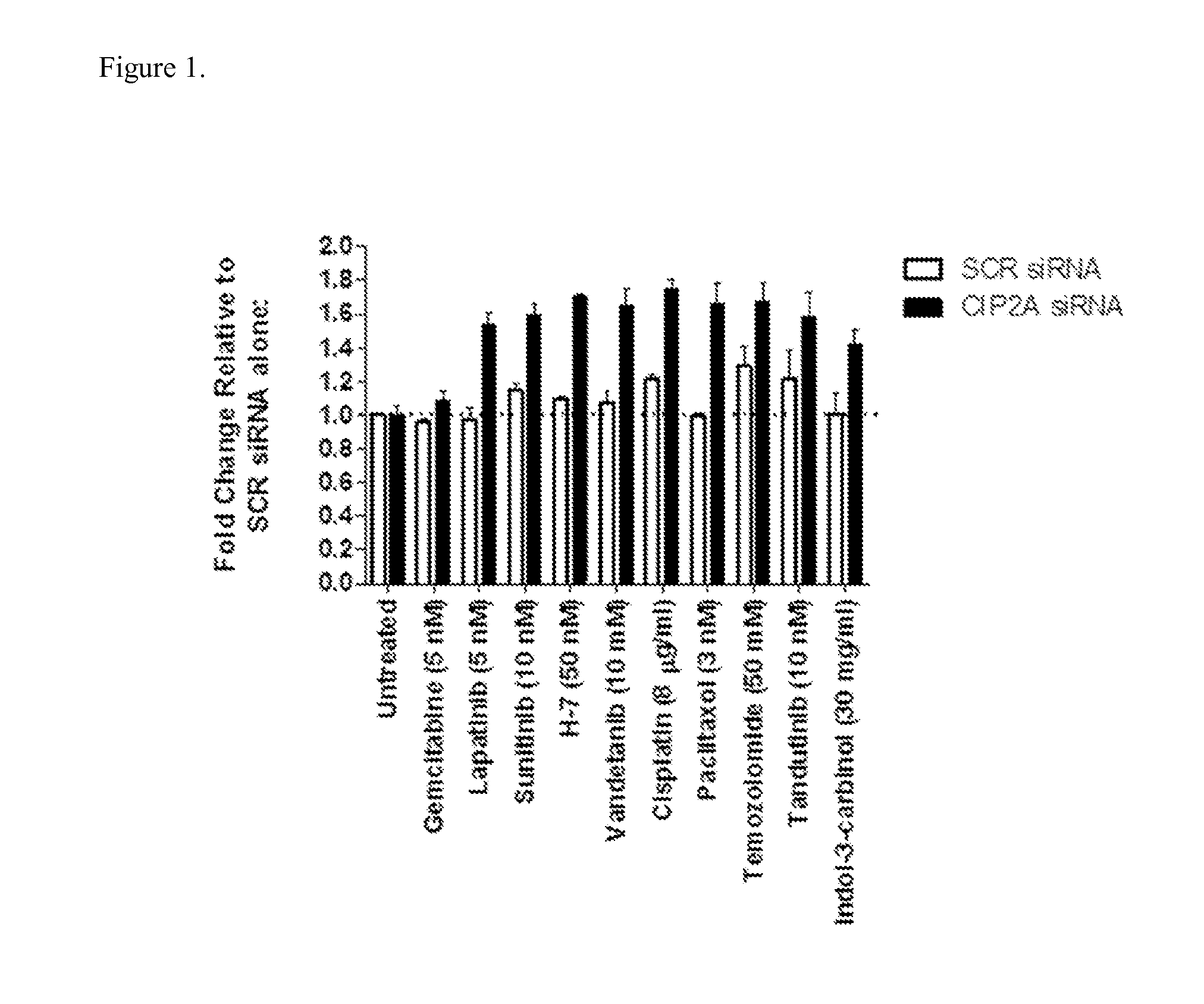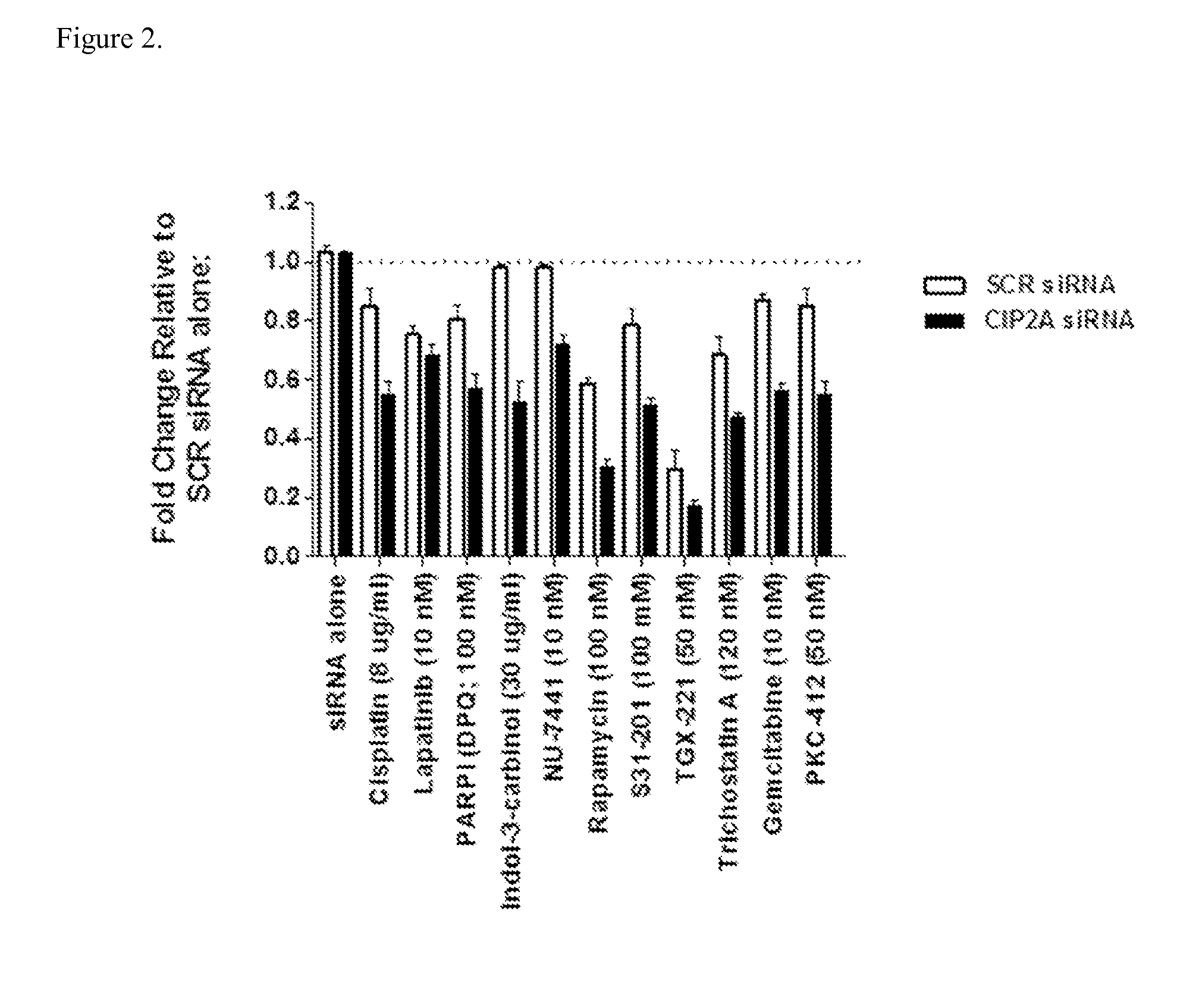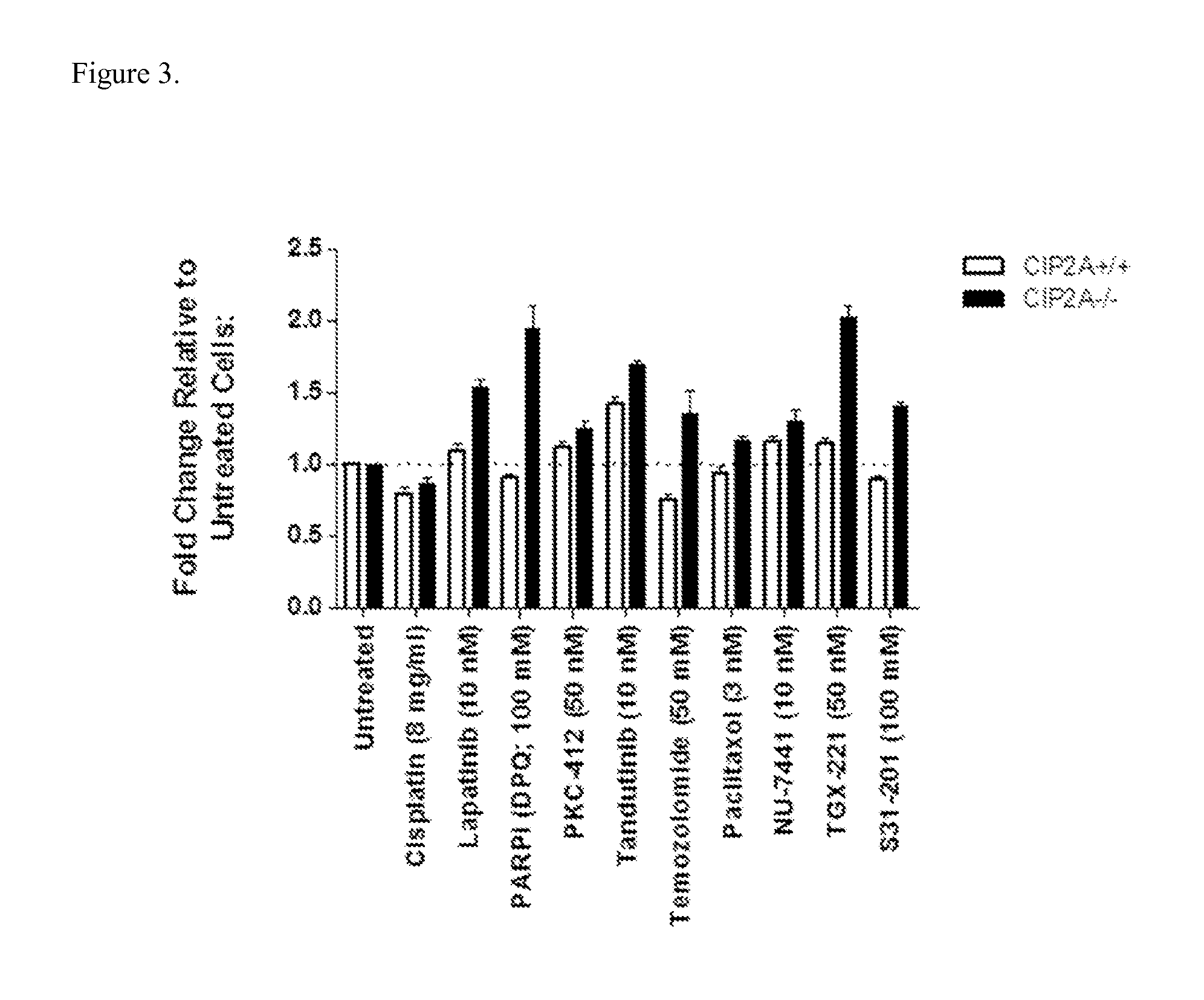Pharmaceutical combination comprising a cip2a silencing agent for use in the treatment of a hyperproliferative disorder, preferably one with impaired p53 function
a technology of cip2a silencing agent and combination cancer, which is applied in the direction of drug composition, biological material analysis, dna/rna fragmentation, etc., can solve the problems of intrinsic or acquired resistance, little is known about mechanisms regulating the composition and/or activity of pp2a complexes in vivo,
- Summary
- Abstract
- Description
- Claims
- Application Information
AI Technical Summary
Benefits of technology
Problems solved by technology
Method used
Image
Examples
example 1
CIP2A Inhibition Sensitizes T98G Cells to Various Chemotherapy Drugs
[0075]The human derived glioma cancer cells, T98G which express mutant p53, were transfected with either SCR siRNA (25 nM) or CIP2A siRNA (Seq ID #2; 25 nM). Following 48 h, media containing siRNA was replaced with media containing a chemotherapy drug at concentrations shown in FIG. 1. In order to determine if combining CIP2A inhibition with standard chemotherapy drugs would induce more potently apoptosis when compared to cells treated with either SCR siRNA or chemotherapy drugs alone, Caspase 3 / 7 activity (Caspase 3 / 7 glo assay, Promega) which is used to determine apoptosis induction in cells, was measured 48 h later according to the manufacturer's instructions. The results shown in FIG. 1, demonstrate that CIP2A siRNA alone does not induce apoptosis. However, combining CIP2A siRNA with either Lapatinib, Sunitinib; H-7; Vandetanib; Cisplatin; Paclitaxol; Temozolomide; Tandutinib or Indo)-3-carbinol, clearly enhance...
example 2
CIP2A Inhibition Sensitizes HeLa Cells to Various Chemotherapy Drugs
[0076]The human derived cervical cancer cells, HeLa in which wt p53 fuction is blunted by HPV18 E6, were transfected with either SCR siRNA (25 nM) or CIP2A siRNA (Seq ID #6; 25 nM). Following 72 h, media containing siRNA was replaced with media containing a chemotherapy drug at concentrations shown in FIG. 2. In order to determine if combining CIP2A inhibition with standard chemotherapy drugs would reduce cell viability more potently when compared to cells treated with either SCR siRNA or chemotherapy drugs alone, the CTG assay (Promega) was used 48 h later, in accordance with the manufacturer's instructions. The results shown in FIG. 2, demonstrate that CIP2A siRNA alone has no effect on reducing cell viability. However, combining CIP2A siRNA with either Laptainib, PARPi (DPQ); Indo)-3-carbinol; NU-7441; Rapamycin; S31-201; TGX-221; Trichostatin A; Gemcitabine; or PKC-412 more potently reduced cell viabiltiy when c...
example 3
Primary Lymphoma Tumor Cells Derived from CIP2A Deficient (CIP2A− / −) Mice are Sensitized to Chemotherapy Drugs
[0077]Primary mouse Lymphoma tumor cell lines which express mutant p53, were derived from the spleen of CIP2A wild type (CIP2A+ / +) or CIP2A deficient (CIP2A− / −) mice crossed with the Emu-myc mouse strain. Cells were seeded in 96-well plates and allowed to settle for 24 hours before ‘normal growth’ media was replaced with media containing chemotherapy drug at concentrations shown in FIG. 3. In order to determine if CIP2A deficient cancer cells were sensitized to chemotherapy drugs when compared with CIP2A expressing cancer cells, Caspase 3 / 7 activity (Caspase 3 / 7 glo assay, Promega) which is used to determine apoptosis induction in cells was measured 48 h later according to the manufacturer's instructions. The results shown in FIG. 3, demonstrate that apoptosis is more potently induced in lymphoma cells expressing extremely low CIP2A levels (CIP2A− / −) when treated with variou...
PUM
| Property | Measurement | Unit |
|---|---|---|
| Fraction | aaaaa | aaaaa |
Abstract
Description
Claims
Application Information
 Login to View More
Login to View More - R&D
- Intellectual Property
- Life Sciences
- Materials
- Tech Scout
- Unparalleled Data Quality
- Higher Quality Content
- 60% Fewer Hallucinations
Browse by: Latest US Patents, China's latest patents, Technical Efficacy Thesaurus, Application Domain, Technology Topic, Popular Technical Reports.
© 2025 PatSnap. All rights reserved.Legal|Privacy policy|Modern Slavery Act Transparency Statement|Sitemap|About US| Contact US: help@patsnap.com



